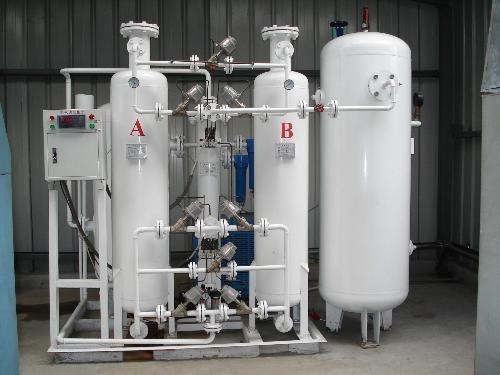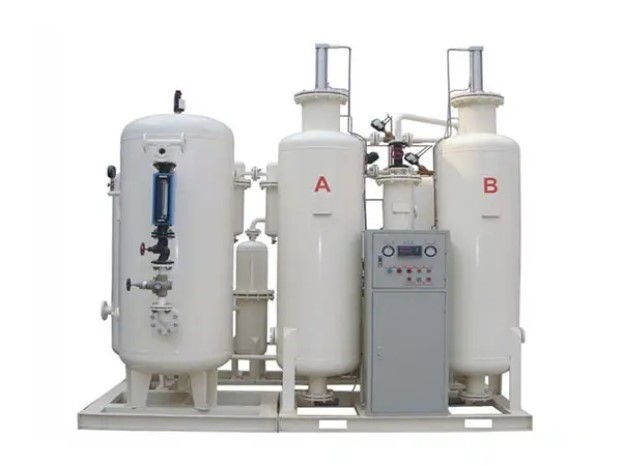Difference between PSA vs TSA
What do TSA and PSA stand for?
Molecular sieves are used in a variety of applications, but the goal is always the same: to separate two or more components from each other. This can be achieved in several different ways, but the most common processes are variable pressure adsorption (PSA) and thermal swing adsorption (TSA). Both methods involve using a sieve, regenerating it, and then reusing it by taking advantage of the fact that the sieve adsorbs contaminants more strongly under certain conditions than under others (physical adsorption).

How do PSA applications work?
PSA is used to adsorb and desorb by varying the pressure. Its operation can be viewed as an isothermal process due to the small thermal conductivity of the adsorbent and the small changes in the temperature of the adsorbent bed caused by the heat of adsorption and desorption, and its working conditions are approximately along the ambient adsorption isotherm, with adsorption at higher pressure (P2) and desorption at lower pressure (P1). Since variable pressure adsorption proceeds along the adsorption isotherm, in terms of static adsorption equilibrium, the slope of the adsorption isotherm has a great influence on the relationship between the pressure and the amount of adsorption, at a constant temperature.
Adsorption is often carried out in a pressurised environment and PSA proposes a combination of pressurisation and depressurisation, which is usually an adsorption-desorption system consisting of pressurised adsorption and depressurisation again. At isothermal conditions, a combination of pressurised adsorption and depressurised desorption is used to form a cyclic process for the adsorption operation. The amount of adsorbent adsorbed on the adsorbent increases as the pressure rises and decreases as the pressure decreases, while the adsorbent is regenerated by releasing the adsorbed gas in the process of depressurisation (to atmospheric pressure or vacuum). Therefore, PSA is called both isothermal adsorption and heatless regeneration adsorption.

How do TSA applications work?
TSA was the first industrialised process for cyclic adsorption, where the cyclic operation takes place in two parallel fixed bed adsorbers. One adsorbs solutes near ambient temperature, while the other desorbs solutes at a higher temperature to regenerate the adsorbent bed. The adsorbent adsorbs the desired solute at ambient or low temperature, desorbs the solute from the adsorbent by increasing the temperature, and the adsorbent itself is regenerated at the same time, before cooling down to the adsorption temperature and entering the next adsorption cycle.
Although desorption can be achieved by vapourisation of the solute alone without the use of cleaning gas, some of the solute vapour will re-adsorb when the bed cools, so it is better to use a cleaning agent to remove the adsorbed mass. The desorption temperature is generally high but not so high as to cause deterioration in the performance of the adsorbent. the ideal TSA cycle can generally be divided into four steps.
① desorption at T1 temperature to reach the permeation point.
② heating the bed to T2.
③ desorption at T2 temperature to reach a low adsorbent load.
④ cooling the bed to T1.
The actual cycle operates without this stage of constant temperature. In the regeneration phase of the cycle, steps ② and ③ are combined, with the bed being heated and desorbed with preheated purge gas until the inlet and outlet temperatures are close. Steps ① and ④ are also carried out simultaneously. The feed starts late in the cooling of the bed, so the adsorption takes place essentially at the feed fluid temperature. For some special TSA processes, such as the regeneration of the adsorbent by direct heating of the adsorbent with steam, an additional drying step of the adsorbent is often required. Due to the slow heating and cooling of the adsorption bed, the cycle time for TSA is long, ranging from several hours to several days.
Difference between PSA vs TSA
PSA is widely used for the separation of gases. In the drying method of gas, the method of adsorption under higher pressure and desorption under reduced pressure is also called variable PSA. desorption is generally carried out under atmospheric pressure, some use evacuation to reduce the pressure, simply the desiccant which has adsorbed water under high pressure in the tower, lowering to atmospheric pressure is almost not desorption, after lowering the pressure, it must be passed into the re-gas with lower relative humidity, even if the partial pressure of the water vapour pressure of the re-gas is less than the When the equilibrium water vapour pressure is less than the equilibrium water vapour pressure on the surface of the desiccant, desorption can be complete. PSA, therefore, uses the principle that when desorption is carried out under reduced pressure, the partial pressure of water vapour drops, and the adsorption capacity decreases.
TSA is the operation of adsorption at a lower temperature and desorption at a higher temperature. It uses the principle that the adsorption capacity decreases with increasing temperature and, as with PSA, simply heating the desiccant in the tower is less effective in desorption. The essence of TSA is to increase the temperature of the desiccant to increase the equilibrium water vapour pressure on the surface of the desiccant during regeneration, while PSA is to reduce the pressure to decrease the water vapour partial pressure of the desiccant during regeneration. The purpose is to make the partial pressure of water vapour in regeneration smaller than the equilibrium water vapour pressure on the desiccant surface, and the difference between the two pressures is the driving force of desorption.
Conclusion
In summary, the PSA has several advantages over the TSA. The biggest advantage is that it prevents the sieve from overheating, which can cause some components of the feed stream to break down into other compounds. This will result in some of the feed being lost in the conversion to those other compounds (which may then be considered contaminants in the product stream). Those decomposed components will stick to the sieve, reducing its effectiveness in each cycle.PSA regeneration avoids this problem.



